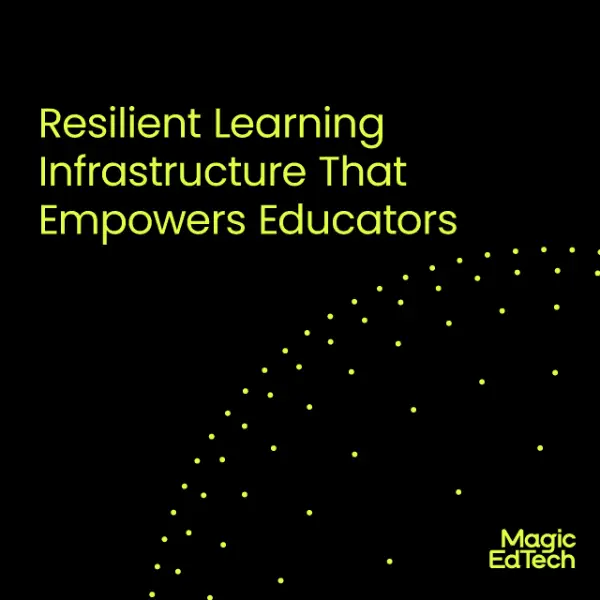How Digital Learning Brings Agility to Talent Mobility
- 3 January, 2024
- Reading Time: 7 mins
What is Talent Mobility?
Talent mobility can be described as the movement of employees within an organization, both horizontally and vertically, to optimize their skills and potential. But what it is, is developing a workforce so agile that you can fill important roles with the right internal people whenever you need to. Easier said than done. To drive a great talent mobility program, you would need 3 things – visibility of all existing employee skills, accurate forecasts of what skills your organization will need, and a way to map these to the aspirations of your existing workforce.
Ask any head of human resources what their main challenge with talent mobility is and you will find that it lies in finding the right equilibrium between the organization’s needs and the aspirations of individual employees. You’re essentially asking human resources to align evolving employee skills and career goals with the dynamic requirements of the business. How does one manage this in a large enterprise that spans beyond borders or extends across multiple industries? Before we get there, let’s talk about why talent mobility is even worth this effort.
Why Talent Mobility Matters
Talent mobility offers a compelling new narrative of motivation and heightened impact on the workforce. Why? For starters, studies say it’ll cost you 1.7 times more to recruit an external new hire and they’re 61% more likely to be terminated compared to your existing workforce. Talent mobility yields a remarkable 30% improvement in processes and a substantial 23% boost in productivity. It proves a much more viable option than hiring externally in a skill-tight market.
Workforce agility will be further exemplified in seamless succession planning and leadership development, streamlining the quest for suitable candidates to step into pivotal roles. Performance management, grounded in outcome-based roles, fuels competency and skill development, aligning seamlessly with both short and long-term objectives. Thus, talent mobility makes recruitment compensation and strategic talent planning an art form, shaping the present and future states of an organization.
AI, Generative AI, and the Talent Imbalance
As AI and Generative AI make inroads into daily work lives, it will cause talent imbalances – some tasks may be rendered redundant and others will take precedence. This is where talent mobility, bolstered by digital learning, steps in as the bridge between evolving organizational needs and the skill sets of your existing workforce.
By filling the gaps caused by AI internally, employers can present more opportunities to their existing talent thereby solidifying the relationship between employees and employers.
The Role of AI and Digital Learning Technology in Talent Mobility
For HR heads, the main challenge in talent mobility lies in finding the right equilibrium between the organization’s needs and the aspirations of individual employees. The goal is to strike a balance where employees feel supported in their career growth, while also addressing critical skill gaps within the company. And digital learning technologies and AI will have an important role to play.
Firstly, these technologies enable more accurate and data-driven talent assessments, ensuring that the right individuals are identified for mobility opportunities based on their skills, performance, and potential. This precision benefits employees by aligning them with roles that suit their strengths and aspirations and enhances their efficiency.
AI and digital learning make talent mobility programs scalable and offer a proactive approach to skill development and career growth within the organization.
8 Creative Ways to Use Digital Learning Solutions for Talent Mobility Programs
1. Build Internal Talent Marketplaces
Create an internal platform or marketplace where employees can showcase their skills, interests, and availability for new projects. This allows managers to discover hidden talents within the organization and facilitates smoother internal talent exchanges.
How learning technology can help: Implement a micro-certification program for specific skills or project experiences. Employees can earn these digital badges through online courses or virtual workshops, showcasing their expertise in the internal talent marketplace. This visual representation of skills can aid managers in making informed decisions about internal talent placement.
2. Personalized Learning Paths
Develop personalized learning paths for employees based on their career aspirations and the organization’s needs. This tailored approach ensures that individuals acquire the specific skills required for roles they are interested in, enhancing talent mobility.
How learning technology can help: Implement an artificial intelligence (AI)-driven learning platform that assesses each employee’s career goals, preferences, and skill gaps. The platform then recommends personalized learning paths, suggesting a mix of online courses, mentorship opportunities, and practical projects tailored to individual aspirations.
3. Skill-Based Currency
Introduce a skill-based currency system where employees earn credits for acquiring new skills. These credits can then be used to apply for different roles or projects within the organization, encouraging a culture of continuous learning and mobility.
How learning technology can help: Develop a virtual reality (VR) or augmented reality (AR) training environment where employees can gain hands-on experience in a simulated work setting. Accumulating practical experience in a digital space contributes to their skill-based currency, making them eligible for diverse roles within the organization.
4. Reverse Mentoring Programs
Implement reverse mentoring programs where junior employees mentor senior executives, particularly in areas like technology or emerging trends. This not only fosters cross-generational collaboration but also opens up new perspectives for talent mobility.
How learning technology can help: Create a digital platform for knowledge exchange through short, engaging video tutorials or interactive e-learning modules. Younger employees can share their digital literacy skills, offering bite-sized lessons on the latest technologies, social media trends, or digital tools, fostering reverse mentoring relationships. This video library becomes a resource for skill swapping, allowing individuals to learn from their peers in a visual and engaging format.
5. Gamification of Learning
Incorporate gamification elements into training programs. By turning skill development into a game with rewards, badges, and levels, employees are more likely to engage in learning activities, enhancing their skills and making them more mobile within the organization.
How learning technology can help: Introduce a gamified learning platform that transforms skill development into an interactive game. Employees can earn points, unlock new levels, and compete with colleagues in friendly challenges. This not only makes learning enjoyable but also encourages healthy competition and collaboration.
6. Job Crafting Workshops
Offer workshops or training sessions on job crafting, empowering employees to proactively shape their roles based on their strengths and interests. This self-directed approach can lead to more personalized career paths and increased talent mobility.
How learning technology can help: Develop an online course or webinar series on job crafting principles. Employees can participate in virtual workshops that guide them through the process of redefining and customizing their roles. Interactive modules can include real-world examples and personalized exercises to apply job crafting concepts.
7. Cross-Functional Innovation Teams
Form cross-functional teams specifically tasked with identifying and solving business challenges. This not only encourages collaboration but also exposes team members to different aspects of the organization, fostering natural talent mobility.
How learning technology can help: Implement a collaborative virtual workspace equipped with digital whiteboards, project management tools, and communication platforms. Offer online training on effective collaboration and ideation techniques, ensuring that cross-functional teams can seamlessly work together regardless of physical location.
8. Flexible Work Arrangements
Implement flexible work arrangements, such as job sharing, part-time positions, or remote work options. This flexibility can attract a diverse range of talent and encourage individuals to explore different roles within the organization without the constraints of traditional work structures.
How learning technology can help: Launch a comprehensive online program for remote work best practices. Cover topics such as time management, virtual communication skills, and maintaining work-life balance in a remote setting. Equip employees with the skills needed to thrive in flexible work arrangements.
Yet, the journey to effective talent mobility isn’t without its hurdles – the biggest challenge that organizations will face will come from within. From employee resistance to skills mismatches and the lack of formal processes for evaluating the impact of reskilling and upskilling, internal challenges must be acknowledged and navigated.
The Future of Talent Mobility
As workplace dynamics evolve and AI takes precedence, talent mobility must remain a top priority for organizations. Digital learning solutions serve as the backbone, rejuvenating employees and building cross-functional collaboration. HR heads can use digital means to deliver curated training resources, arrange virtual hackathons, and build peer-to-peer collaboration across the organization on innovative projects. To know more about how to make your talent mobility programs scalable and successful using digital learning solutions, speak to our team at www.magicedtech.com.






